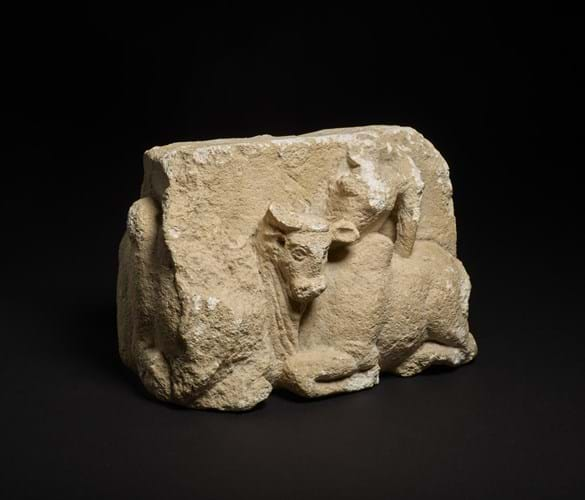
It had been planned to be offered by TimeLine Auctions but was withdrawn when Art Loss Register (ALR) discovered it may have been a stolen object.
Following the discovery the British Museum verified it had been looted and with the help of the Metropolitan Police (Art and Antiques Unit) and ALR it will be returned to Afghanistan.
The carved limestone corner block was originally excavated by a French archaeological expedition in the 1950s at the site of Surkh Kotal in northern Afghanistan.
It was part of a composite frieze with other blocks showing human figures and bulls in some form of ceremony. The site and temple date to the c.2nd century AD when this region was part of the Kushan empire.
Following their excavation, the blocks were taken to Kabul where they were registered in the National Museum of Afghanistan and published as part of that collection.
During and following the Afghan civil war many items were damaged, destroyed or stolen and illegally exported.
This limestone sculpture is the first stolen piece from the Surkh Kotal temple to be recovered.
The National Museum of Afghanistan has agreed for the sculpture to go on public display at the British Museum prior to its return and display in Kabul.
“Value of cooperation”
Chris Wren at TimeLine Auctions said: “Our policy is to pay ALR to check all items of 'Western Asiatic' and of other cultures. Given that the sculpture is small at around 19cm square and was estimated at £300-400, it is most unlikely that it would have been recognised had TimeLine not asked ALR to check it against their database.
“TimeLine's policy has previously led to other items being recovered and returned to their rightful location. We are pleased that our policies have helped in the return of another piece of looted art.”
James Ratcliffe, director of recoveries at ALR, said: “This is a clear demonstration of the value of cooperation between various bodies in pursuing looted antiquities.”
The sculpture will be officially returned via the Embassy of the Islamic Republic of Afghanistan.
Fahim Rahimi, director at the National Museum of Afghanistan, said: “I hope that not only customs, but also museums and other private collections, will continue to help us return objects from Afghanistan in this way.”
DI Jim Wingrave of the Metropolitan Police’s Art and Antiques Unit said: “Unfortunately, there are many other artefacts that are still missing and we encourage anyone with knowledge of the whereabouts of stolen property to contact the police.”





